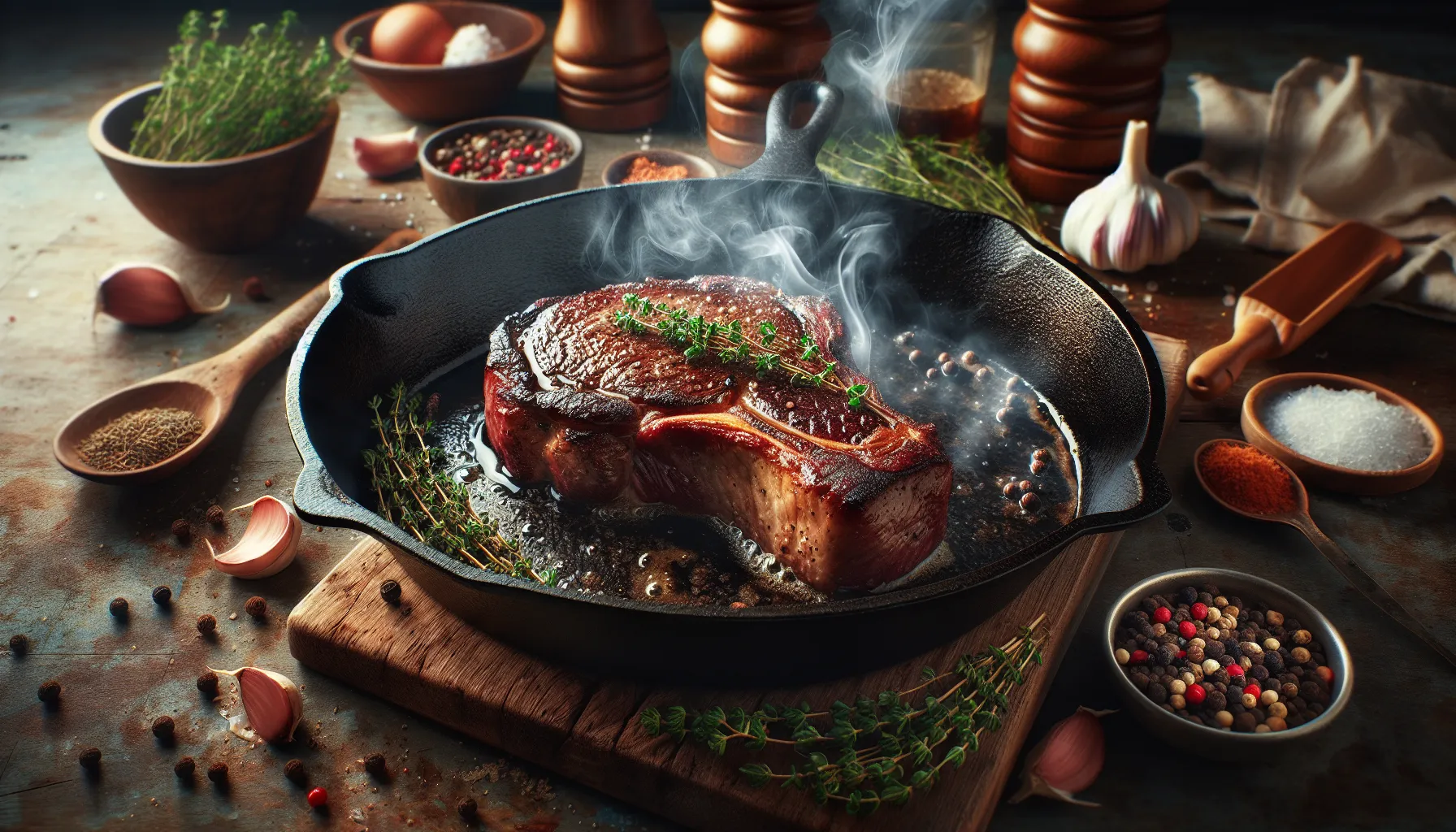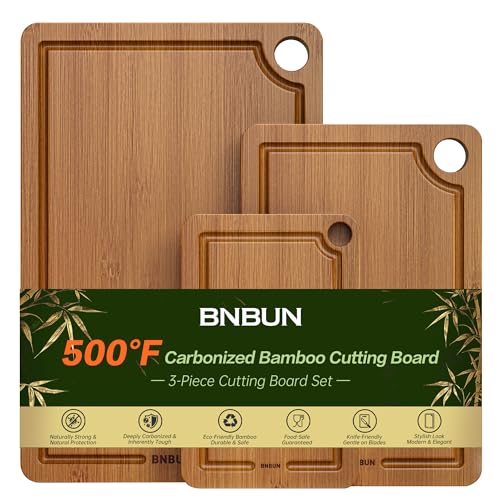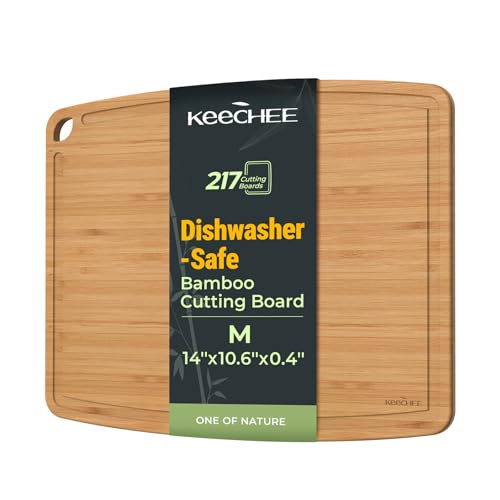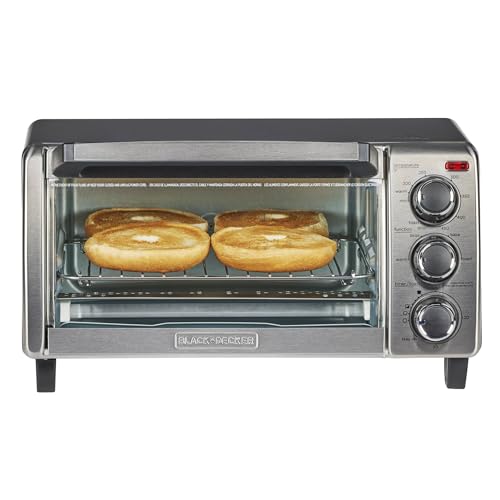Ingredients
For the Steak
- 2 ribeye steaks, New York strip steaks, or filet mignon (1 to 1½ inches thick)
- 2 tablespoons kosher salt
- 1 tablespoon freshly ground black pepper
- 2 tablespoons high-heat cooking oil (avocado oil or vegetable oil)
- 3 tablespoons unsalted butter
- 3 fresh garlic cloves, smashed
- 2 to 3 fresh thyme sprigs or rosemary sprigs
Optional Finishing Touches
- 1 tablespoon flaky sea salt
- 1 tablespoon fresh herbs (chopped parsley or chives)
- 1 lemon, cut into wedges
Your steak selection determines the final flavor profile of this dish. Ribeye offers rich marbling and intense beef flavor while New York strip provides a firmer texture with excellent taste. Filet mignon delivers the most tender eating experience with mild flavor that absorbs seasonings beautifully.
Room temperature steaks cook more evenly than cold ones straight from the refrigerator. Remove your steaks 30 to 45 minutes before cooking to ensure optimal results. Pat each steak completely dry with paper towels to remove surface moisture that prevents proper searing.
High-heat oils prevent smoking and burning during the searing process. Avocado oil withstands temperatures up to 520°F while vegetable oil handles heat up to 400°F. Both options create the perfect foundation for achieving that coveted golden-brown crust.
Fresh herbs and aromatics transform a simple seared steak into a restaurant-quality experience. Garlic releases fragrant compounds when heated in butter while thyme and rosemary infuse the meat with earthy notes during the basting process.
Equipment Needed
Your success with this skillet steak recipe depends on having the right tools at your disposal. A cast-iron skillet stands as the most essential piece of equipment for achieving that perfect sear and even heat distribution throughout the cooking process.
Cast-Iron Skillet
You need a heavy-duty cast-iron skillet that’s at least 10 to 12 inches in diameter. This material retains heat exceptionally well and creates the high-temperature environment necessary for developing that coveted golden-brown crust. Cast iron also provides consistent heat distribution across the entire surface area.
Kitchen Tongs
Long-handled tongs give you precise control when flipping your steak without piercing the meat. You’ll avoid losing precious juices that keep your steak tender and flavorful. Choose tongs with a good grip that won’t slip during the cooking process.
Instant-Read Thermometer
Temperature accuracy ensures your steak reaches the exact doneness you prefer. An instant-read thermometer takes the guesswork out of cooking and prevents overcooking expensive cuts of meat. Digital models provide the most reliable readings.
Paper Towels
You’ll use paper towels to pat your steaks completely dry before seasoning. Removing surface moisture allows for better searing and prevents the meat from steaming in the pan. Keep extra towels nearby for cleanup during cooking.
Cutting Board
A sturdy cutting board provides a stable surface for resting your finished steak. Wood or bamboo boards work best as they won’t dull your knife when slicing. Choose one large enough to accommodate your steak size comfortably.
Sharp Knife
A well-sharpened chef’s knife ensures clean cuts when slicing your finished steak. Sharp blades prevent tearing the meat fibers and help maintain the steak’s juicy texture. Keep your knife properly maintained for best results.
Preparation
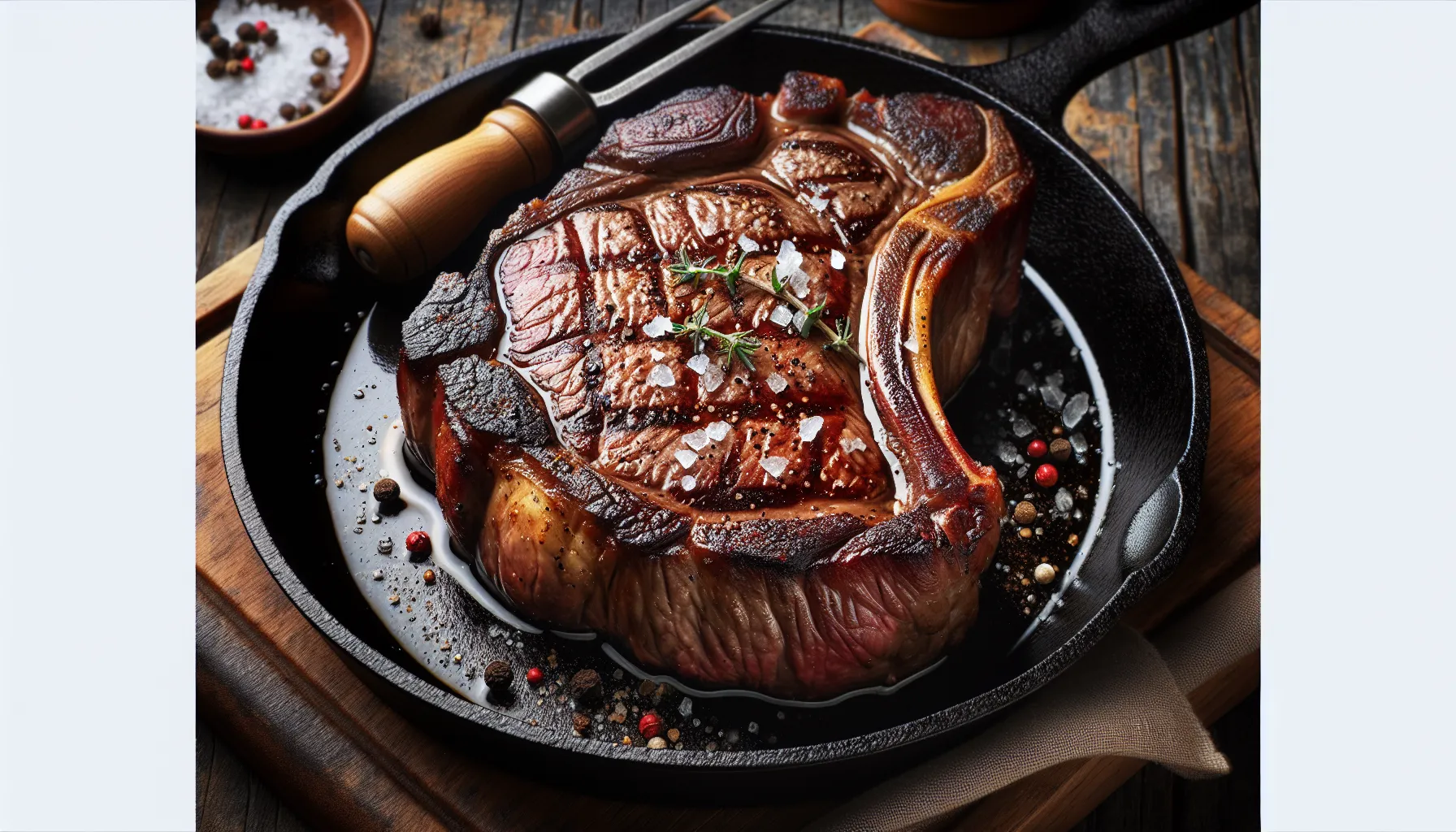
Proper preparation sets the foundation for achieving that perfect restaurant-quality sear and tender interior. Taking time with these essential steps ensures your steak will cook evenly and develop maximum flavor.
Selecting the Right Cut of Steak
Your choice of steak cut directly impacts the final flavor and texture of your dish. Ribeye delivers rich marbling throughout the meat which creates exceptional juiciness and bold beef flavor when seared in the skillet. New York strip offers a firmer texture with moderate marbling that provides excellent chew and concentrated taste. Filet mignon presents the most tender option with subtle flavor that pairs beautifully with herbs and aromatics.
Look for steaks that measure 1 to 1.5 inches thick for optimal cooking control. Thinner cuts cook too quickly and risk overcooking while thicker steaks may develop a charred exterior before the interior reaches your desired temperature. Choose steaks with bright red color and avoid any with gray or brown spots that indicate age.
Bringing Steak to Room Temperature
Remove your steaks from refrigeration 30 to 45 minutes before cooking to allow them to reach room temperature. Cold steaks placed directly into a hot skillet will cook unevenly with the exterior searing rapidly while the interior remains cold. Room temperature steaks cook more uniformly and achieve better overall doneness.
Pat each steak completely dry with paper towels to remove surface moisture. Excess moisture creates steam in the hot skillet which prevents proper browning and reduces the Maillard reaction that develops the coveted golden crust. Dry surfaces sear immediately upon contact with the hot cast iron creating that perfect caramelized exterior.
Seasoning the Steak
Season your steaks generously with coarse kosher salt and freshly ground black pepper at least 15 minutes before cooking. Salt draws out surface moisture initially then dissolves and penetrates the meat to enhance flavor throughout. Early seasoning allows the salt to work its way into the steak fibers for maximum taste impact.
Apply seasoning to both sides of each steak using approximately 1 teaspoon of salt per pound of meat. Press the seasonings gently into the surface to ensure adherence during the cooking process. Additional aromatics like garlic powder or dried herbs can complement the basic salt and pepper foundation but avoid overwhelming the natural beef flavor.
Instructions
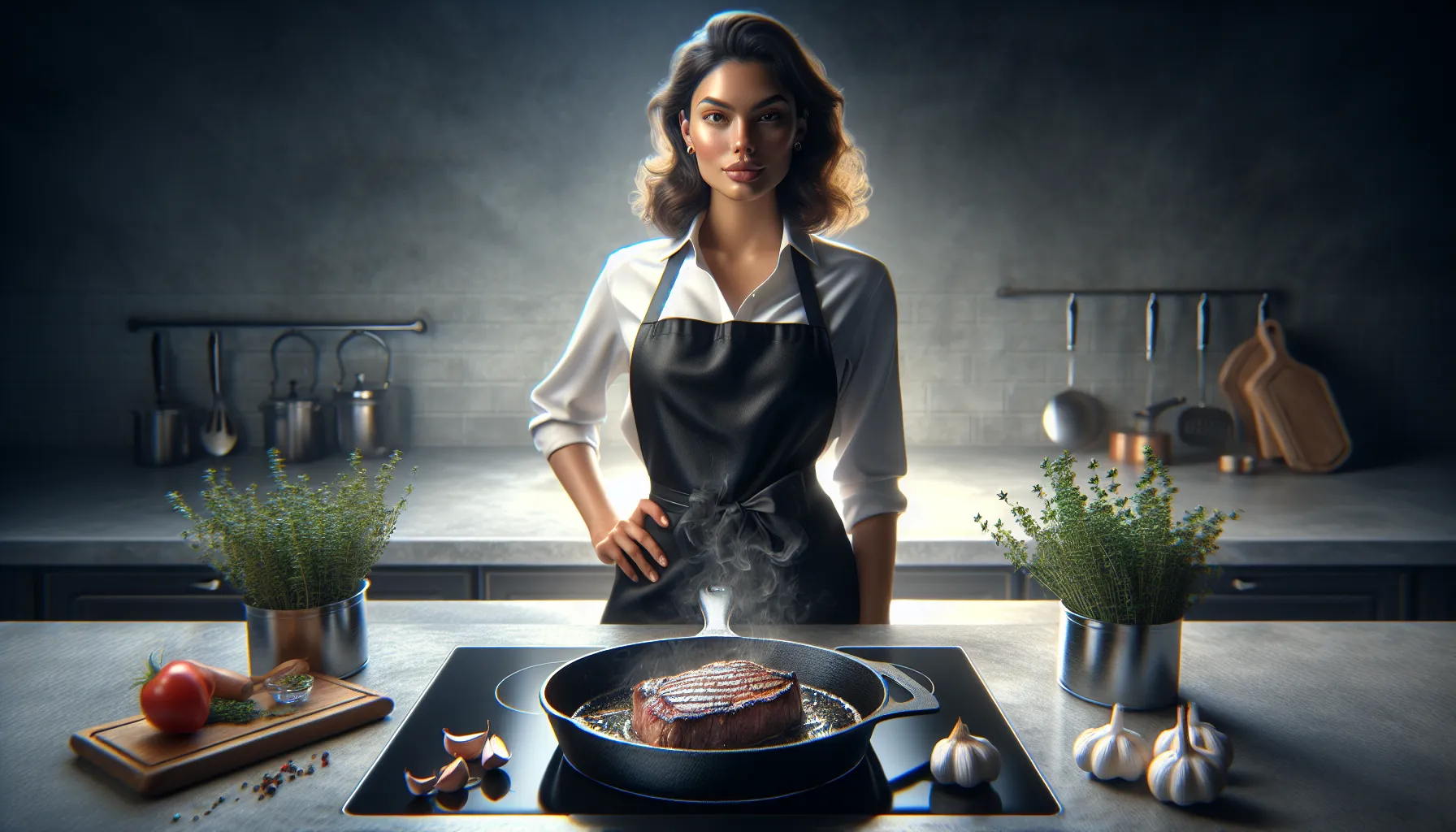
These step-by-step instructions will guide you through cooking the perfect skillet steak with a restaurant-quality sear and juicy interior. Follow each stage carefully to achieve professional results in your own kitchen.
Preheating the Skillet
Place your cast-iron skillet over medium-high heat and allow it to heat for 4 to 5 minutes. The pan reaches the proper temperature when a drop of water sizzles and evaporates immediately upon contact. Add 1 tablespoon of avocado oil or vegetable oil to the hot skillet and swirl to coat the surface evenly. Heat the oil until it begins to shimmer and just starts to smoke lightly. This high temperature ensures the Maillard reaction occurs quickly, creating that coveted golden-brown crust.
Searing the Steak
Gently place your seasoned steak into the hot skillet using long-handled tongs. You should hear an immediate aggressive sizzle when the meat hits the pan. Avoid moving or pressing down on the steak for 3 to 4 minutes to allow proper crust formation. Flip the steak once using your tongs and sear the second side for another 3 to 4 minutes. Add butter, fresh thyme sprigs, and smashed garlic cloves during the final 2 minutes of cooking. Tilt the skillet slightly and baste the steak with the aromatic butter using a spoon.
Checking for Doneness
Insert an instant-read thermometer into the thickest part of the steak to check internal temperature. Remove the thermometer quickly to prevent juice loss and refer to these target temperatures:
| Doneness Level | Internal Temperature |
|---|---|
| Rare | 120-125°F |
| Medium-rare | 130-135°F |
| Medium | 135-145°F |
| Medium-well | 145-155°F |
| Well-done | 155°F+ |
The steak will continue cooking slightly during the resting period, so remove it when it reaches 5°F below your target temperature.
Resting the Steak
Transfer the cooked steak to a clean cutting board and tent loosely with aluminum foil. Allow the steak to rest for 5 to 10 minutes before slicing or serving. This resting period allows the juices to redistribute throughout the meat, ensuring maximum tenderness and flavor. Slice against the grain if desired, using your sharp knife to create clean cuts that showcase the perfectly cooked interior.
Directions for Perfect Results
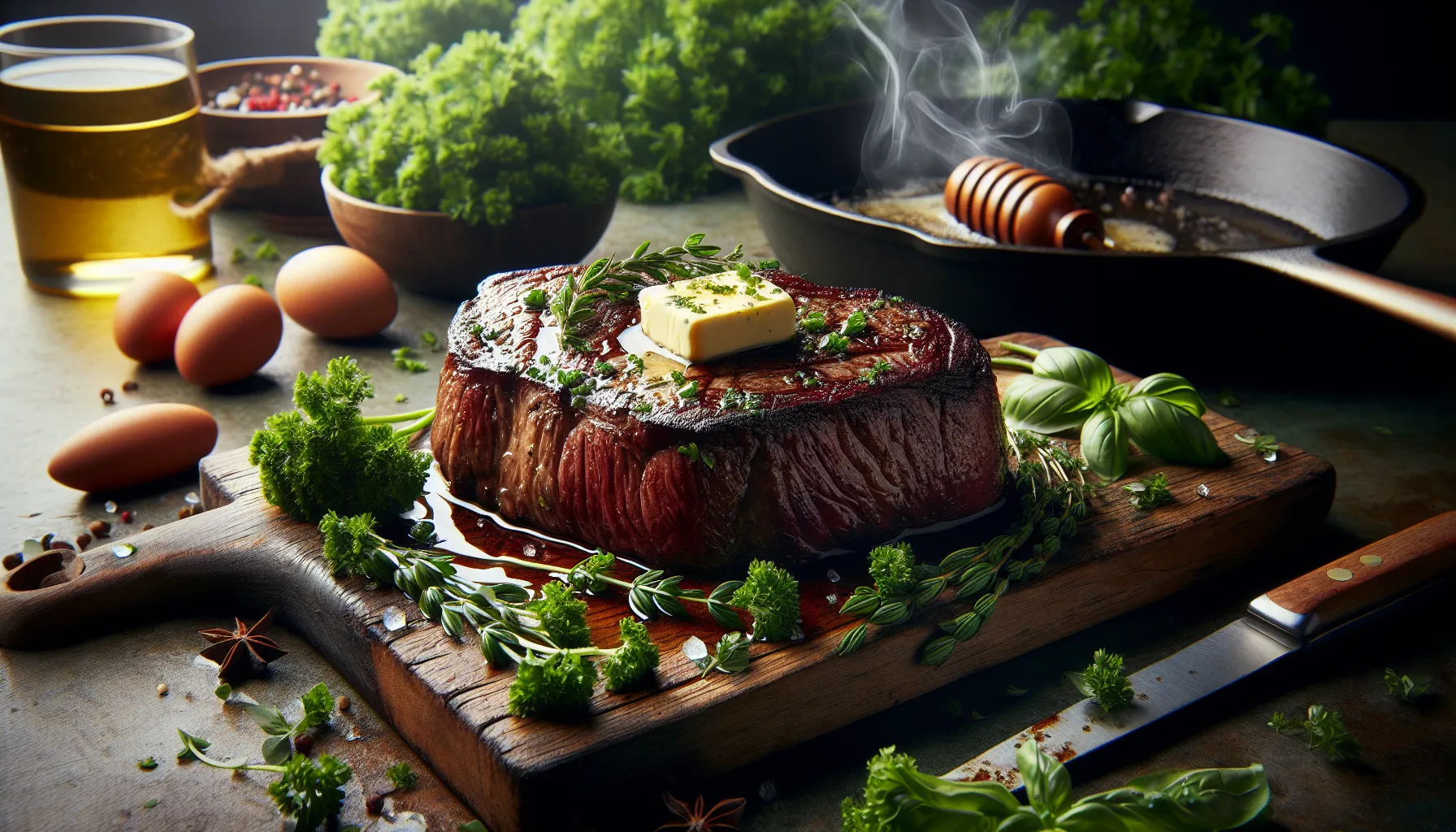
Following precise temperature and timing guidelines transforms your skillet steak from good to exceptional. These measurements ensure consistent results every time you cook.
Temperature Guidelines
Monitor your steak’s internal temperature with an instant-read thermometer for accurate doneness. Insert the thermometer into the thickest part of the steak for the most reliable reading.
| Doneness Level | Internal Temperature | Description |
|---|---|---|
| Rare | 120-125°F | Cool red center |
| Medium Rare | 130-135°F | Warm red center |
| Medium | 135-145°F | Warm pink center |
| Medium Well | 145-155°F | Slightly pink center |
| Well Done | 155°F+ | No pink throughout |
Your skillet should reach 400-450°F before adding the steak. Test the heat by flicking a few drops of water onto the surface – they should sizzle and evaporate immediately. Remove the steak from heat when it reads 5°F below your target temperature since carryover cooking will raise the internal temperature during resting.
Timing Tips
Cook 1-inch thick steaks for 3-4 minutes per side for medium rare doneness. Thicker cuts of 1.5 inches require 4-5 minutes per side using the same heat level. Start timing once the steak hits the hot skillet and you hear the initial sizzle.
Flip your steak only once during cooking to develop the best crust. Avoid pressing down with your spatula or tongs as this releases precious juices. Add butter and aromatics during the final 2 minutes of cooking for enhanced flavor without burning the herbs.
Rest your finished steak for 5-10 minutes after cooking regardless of thickness. This resting period allows juices to redistribute throughout the meat for maximum tenderness. Cover loosely with foil to retain heat while the steak rests on your cutting board.
Make-Ahead Instructions
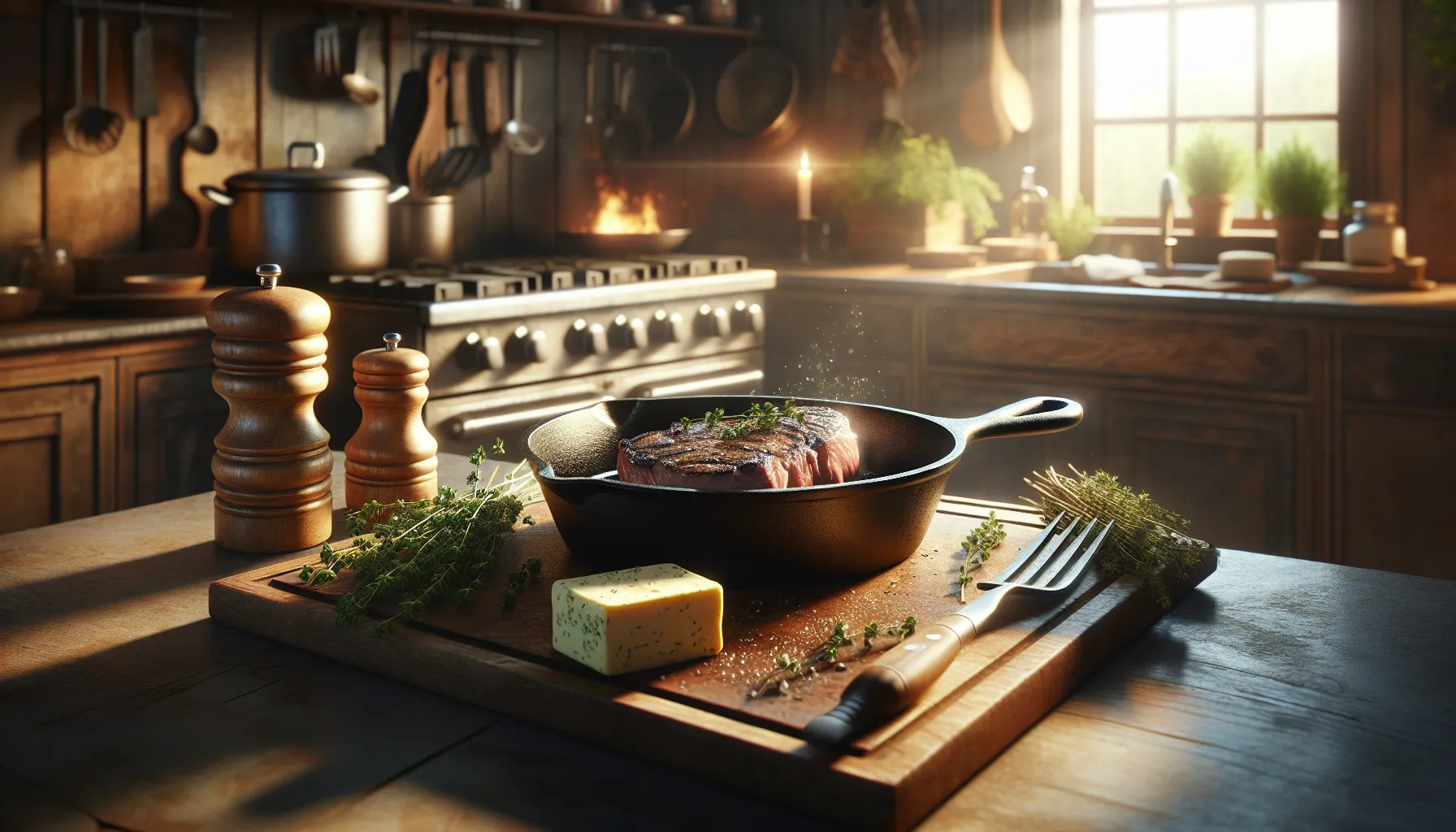
You can prepare several components of your skillet steak recipe in advance to streamline the cooking process and ensure perfect results. Season your steaks with coarse kosher salt and freshly ground black pepper up to 24 hours before cooking. Wrap the seasoned steaks individually in plastic wrap and refrigerate them until ready to use.
Remove steaks from refrigeration 30 to 45 minutes before cooking to bring them to room temperature. This advance timing allows for even cooking throughout the meat and prevents the exterior from overcooking while the interior remains cold.
Prepare your herb butter mixture up to three days ahead by combining softened butter with minced garlic, fresh thyme, and rosemary. Store the herb butter in an airtight container in the refrigerator. Shape the mixture into a log using parchment paper for easy slicing when ready to use.
Pat your steaks completely dry with paper towels just before cooking, even if you seasoned them earlier. Excess moisture on the surface prevents proper searing and reduces the development of that coveted golden-brown crust.
Set up your cooking station in advance by placing your cast iron skillet on the stove, positioning tongs within easy reach, and having your instant-read thermometer nearby. Measure out your high-heat cooking oil so you can add it quickly once the pan reaches proper temperature.
Your prepared steaks will maintain their quality for up to 48 hours when properly stored in the refrigerator. Always bring them to room temperature before cooking regardless of how long they’ve been seasoned and stored.
Serving Suggestions
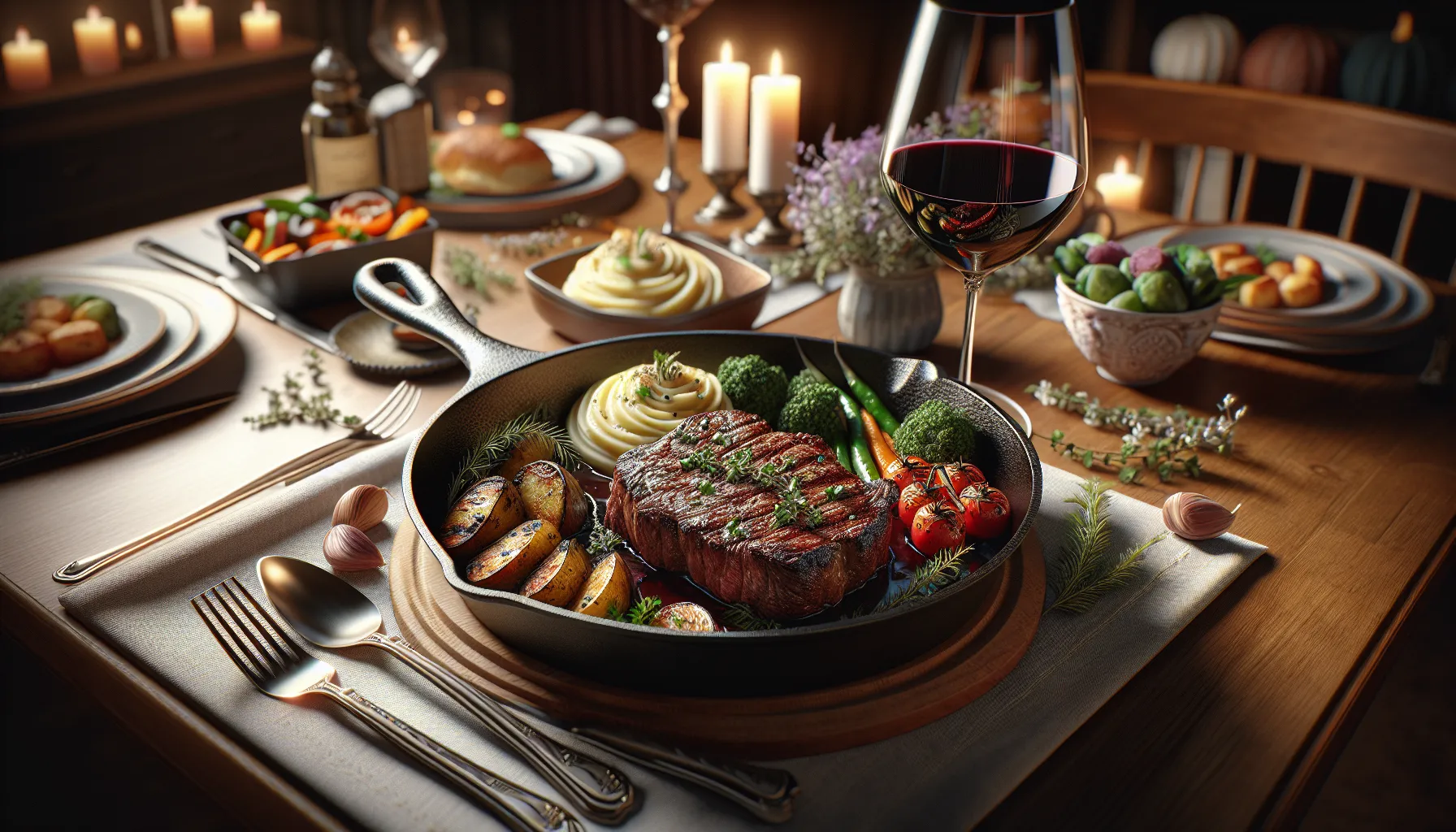
Transform your perfectly cooked skillet steak into a complete dining experience with thoughtful accompaniments and presentation. The rich flavors of your seared steak pair beautifully with both classic and creative side dishes that complement rather than compete with the meat’s natural taste.
Roasted vegetables make an excellent foundation for your steak dinner. Asparagus spears drizzled with olive oil and seasoned with salt and pepper roast to perfection in 12-15 minutes at 425°F. Brussels sprouts halved and caramelized until golden brown provide a slightly bitter contrast that enhances the steak’s savory notes. Roasted carrots bring natural sweetness to balance the meal’s richness.
Potato preparations offer endless possibilities for your steak presentation. Creamy mashed potatoes with butter and cream create a luxurious base that soaks up the steak’s flavorful juices. Crispy roasted fingerling potatoes seasoned with rosemary and garlic provide textural contrast. Hasselback potatoes sliced accordion-style and baked until crispy offer an impressive visual element.
Fresh salads lighten the richness of your skillet steak while adding color and nutrients to the plate. A simple arugula salad dressed with lemon vinaigrette and shaved Parmesan cheese provides peppery notes that complement the meat. Mixed greens with cherry tomatoes and red onion offer freshness and acidity. Caesar salad with crisp romaine and homemade croutons creates a restaurant-quality experience.
Sauce options elevate your steak from excellent to extraordinary. The herb butter you prepared during cooking serves as a perfect finishing touch when placed on top of the resting steak. Classic béarnaise sauce with its rich egg yolk base and tarragon flavor pairs beautifully with any cut. Red wine reduction made from pan drippings creates an elegant accompaniment that intensifies the beef flavors.
Wine pairings enhance the overall dining experience when chosen thoughtfully. Full-bodied red wines like Cabernet Sauvignon or Malbec complement the rich flavors of ribeye steaks. Medium-bodied options such as Merlot or Pinot Noir work well with leaner cuts like filet mignon. Bold reds like Syrah or Zinfandel stand up to the intense flavors of well-seasoned New York strip steaks.
Presentation techniques make your home-cooked steak rival restaurant presentations. Slice your rested steak against the grain at a slight angle to showcase the perfect doneness and create visually appealing portions. Arrange slices on warmed plates to maintain temperature. Garnish with fresh herbs like thyme or rosemary sprigs for an elegant finishing touch.
Temperature considerations ensure your carefully prepared steak maintains its quality when served. Warm your plates in a 200°F oven for 2-3 minutes before plating to prevent the steak from cooling too quickly. Serve immediately after slicing to preserve the optimal texture and temperature. Keep accompaniments warm in covered dishes until ready to plate.
| Cut Type | Best Wine Pairing | Recommended Temperature |
|---|---|---|
| Ribeye | Cabernet Sauvignon | Medium rare (130-135°F) |
| New York Strip | Malbec | Medium rare (130-135°F) |
| Filet Mignon | Pinot Noir | Medium rare (130-135°F) |
Storage and Reheating
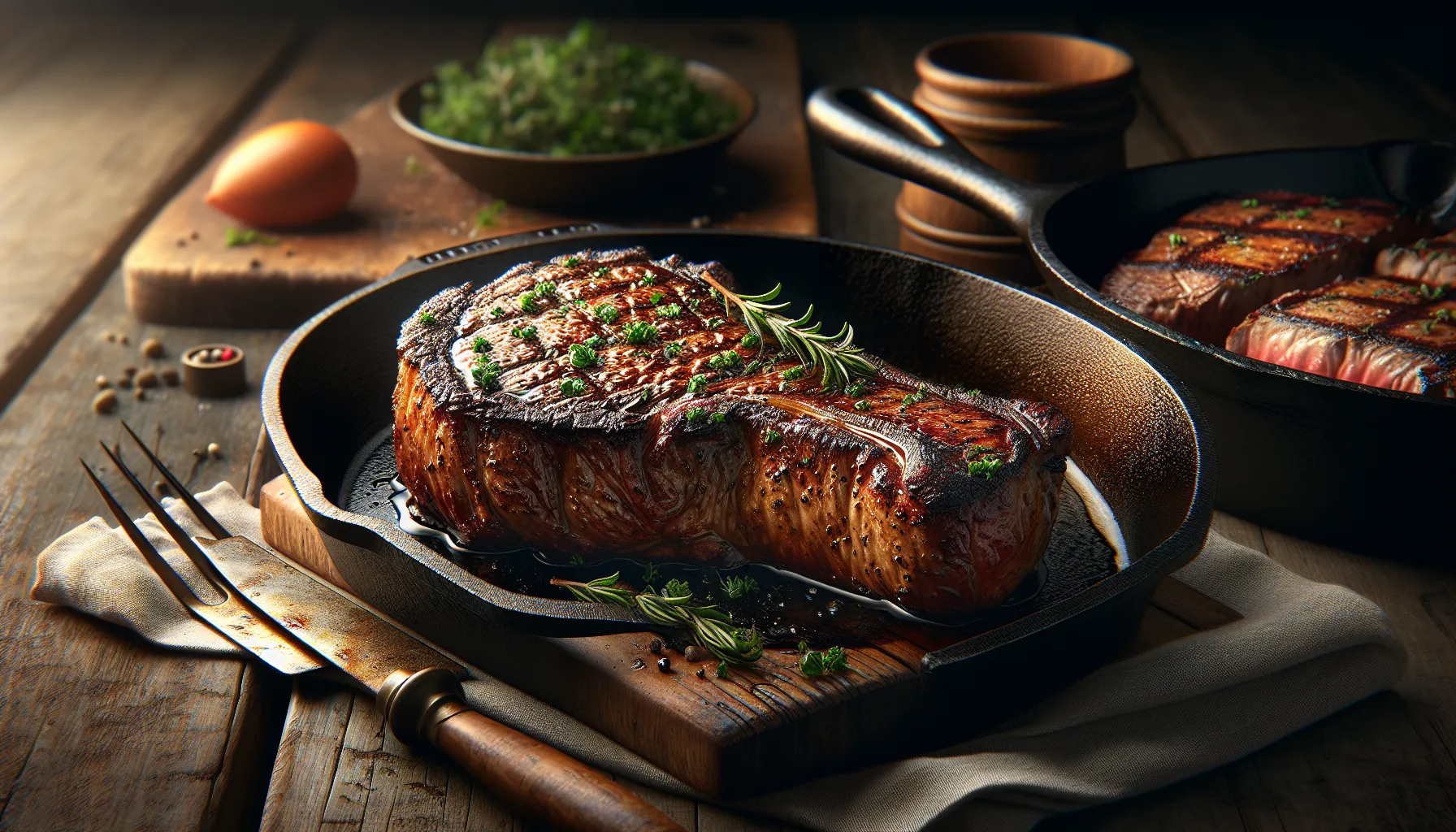
Your perfectly cooked skillet steak maintains its quality when stored properly in the refrigerator for up to 3-4 days. Wrap leftover steak tightly in aluminum foil or place it in an airtight container to prevent moisture loss and flavor absorption from other foods. Allow the steak to cool completely before refrigerating to maintain food safety standards.
Freezing extends storage life up to 2-3 months when you wrap the steak in freezer paper or vacuum-sealed bags. Label containers with the date to track freshness and ensure optimal flavor retention. Thaw frozen steak overnight in the refrigerator before reheating for even temperature distribution.
Reheating Methods
Oven Method delivers the most even results for maintaining your steak’s original texture. Preheat your oven to 250°F and place the steak on a wire rack set over a baking sheet. Heat for 20-30 minutes until the internal temperature reaches 110°F for medium-rare or your desired warmth level.
Skillet Reheating works best for quick warming while preserving the crust. Heat a tablespoon of butter or oil in your cast-iron skillet over medium-low heat. Add the steak and warm for 1-2 minutes per side until heated through without overcooking.
Sous Vide Reheating provides precise temperature control when you have the equipment available. Set your immersion circulator to 120°F for rare or 130°F for medium-rare. Vacuum seal the steak and heat for 45 minutes to restore its original doneness level.
| Reheating Method | Temperature | Time | Best For |
|---|---|---|---|
| Oven | 250°F | 20-30 minutes | Even heating |
| Skillet | Medium-low | 1-2 minutes per side | Quick warming |
| Sous Vide | 120-130°F | 45 minutes | Precise control |
Avoid microwaving as it creates uneven heating and can make your steak tough and rubbery. Rest reheated steak for 2-3 minutes before serving to allow heat distribution throughout the meat. Slice against the grain just before serving to maintain tenderness and optimal texture.
Conclusion
You now have all the tools and knowledge needed to create restaurant-quality steak in your own kitchen. This skillet method delivers consistently delicious results that’ll impress your family and guests every time.
The beauty of this technique lies in its simplicity and versatility. Whether you’re cooking a weeknight dinner or preparing for a special occasion you’ll achieve that perfect golden crust and juicy interior that makes a truly memorable meal.
With proper preparation timing and the right equipment you’re well on your way to mastering this essential cooking skill. Your cast-iron skillet is about to become your best friend for creating steakhouse-worthy dinners at home.

